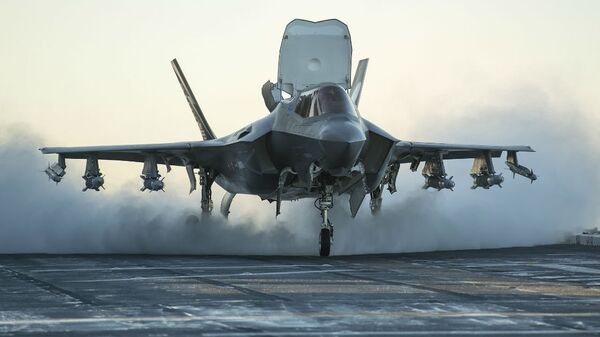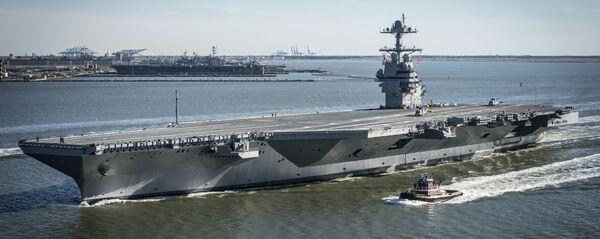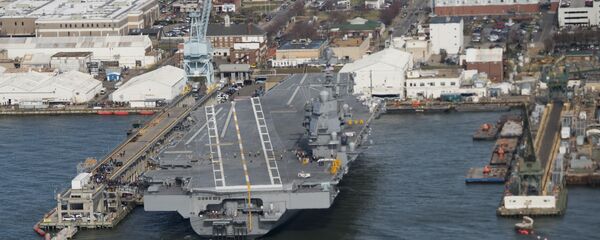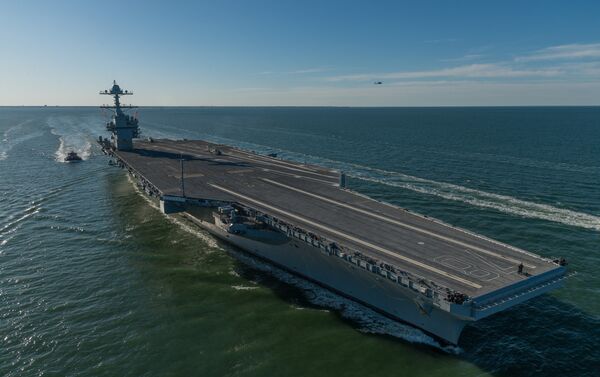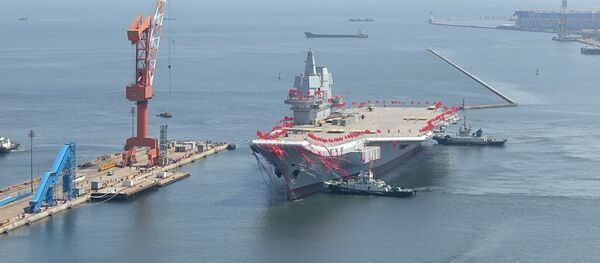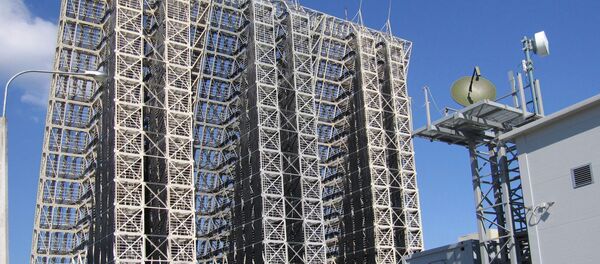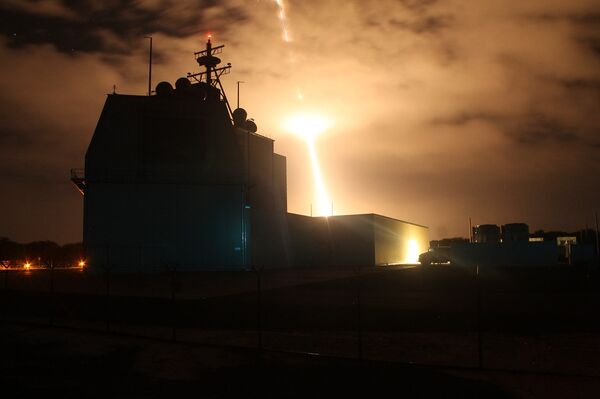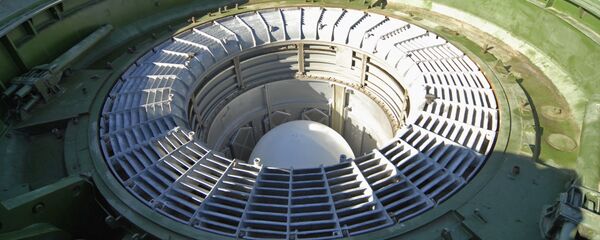Last week, the United States Navy finally accepted delivery of the USS Gerald R. Ford, a new supercarrier design which entered the Navy over a year behind schedule and way over budget. The final estimated $12.8 billion price tag for the ship was over 20% more than the military planned to spend, with an additional $4.7 billion sunk into R&D work on the vessel.
In other words, when the ship finally enters full-scale active service, expected sometime after 2020, it will have cost about a third of Russia's total 2016 military budget of $55.33 billion US.
For the record, no other country on earth even comes close to US spending. China, Washington's closest competitor in dollar terms, allocated 954.35 billion yuan, or about $147 billion US in 2016.
But as Zakvasin pointed out, the gargantuan scale of US spending on its military raises questions, particularly when it comes to the feasibility and rationality of many of its spending priorities, especially compared to similar, much less costly developments by Washington's main potential adversaries.
The Ford, Zakvasin stressed, is just the latest example of the kind of largesse that's been prevalent inside the Pentagon, particularly over the last two decades or so.
Aircraft Carrier Without Any Aircraft
The first new carrier developed over the last 40 years, the Ford's floating airfield design was laid down in August 2005, and launched into the water in November 2013. Last month, the supercarrier wrapped up acceptance trials, and the ship was accepted by the Navy for training and integration. However, its nearly 12 year construction time notwithstanding, the full-scale exploitation of the ship, for technical reasons, is not expected to be possible until 2020.
"Right now, the carrier is not equipped with airplanes," Zakvasin recalled. "It's assumed that the ship's flight deck will be fitted with F/A-18E/F Super Hornets fighter bombers and fifth-gen F-35C fighters capable of vertical takeoff. If the purchase of the carrier's naval aviation is taken into account, the project's cost rises to nearly $14 billion."
Over the past year, as the project moved closer and closer to completion, US media began reporting on serious problems in the ship's design. Last June, Bloomberg reported that Pentagon testers had found defects in the Ford's cutting-edge launch and recovery, defensive and munitions movement systems.
At present, the US has 12 combat-ready Nimitz-class aircraft carriers, with another 10 ships on standby. Shipbuilders are in the process of building another Ford-class carrier, the John F. Kennedy, and a third is expected to be laid down in 2018. Total spending on the project is expected to reach at least $35 billion.
$1.5 Trillion Dollar Mistake of a Fifth-Gen Fighter
A much more controversial piece of spending, according to Zakvasin, is the US's fifth-generation fighter program – the Lockheed Martin F-35. "The basis for this machine," the journalist recalled, "are technologies first created by the Yakovlev Design Bureau, which created a unique VTOL fighter in the form of the Yak-141" back in the 80s.
With flight testing of the F-35 started in October 2000, almost seventeen years later, developers still haven't dealt with many of the problems plaguing the plane. For now, US aircraft carriers continue to depend on the trusty F/A-18E/F Super Hornets, while the backbone of the US Air Force continues to be made up of F-15 Eagles, F-16 Fighting Falcons and, more recently, F-22 Raptors.

"If one were to believe the tactical and technical characteristics for the F-35 declared by Lockheed Martin, the US has made nothing short of a revolution in aircraft construction," Zakvasin wrote. In reality, he added, many experts worldwide, including the US itself, have serious doubts about the aircraft's characteristics, including its declared speed capabilities, and its ability to overcome advanced air defense systems, such as the Russian S-400 air defense missile system.
These costs are almost mind-boggling, all the more so because numerous experts have already poked holes in many of the wonder weapon's advanced capabilities, with the plane said to be no match against 4+++ gen planes in dogfights, detectable by already-existing Russian radar systems, and targetable by current and future air defense systems which, incidentally, cost just a fraction of its $95 million apiece price tag.
Imitation Missile Defense
US engineers are thought to have been engaged in research in the creation of systems capable of defeating intercontinental ballistic missile systems ever since their appearance in the 1960s. In 1972, the Soviet Union and the United States signed the Anti-Ballistic Missile Treaty, aimed at limiting ABM systems. In 1983, the Reagan administration unveiled its Strategic Defense Initiative ABM research program. In 2001, George W. Bush withdrew from the ABM Treaty, created the American Missile Defense Agency, and renewed US efforts to realize Reagan's dream of a functioning missile shield.
Zakvasin recalled that for 16 years now, "the US have been investing in the creation of ground facilities (radar stations and THAAD launchers), while upgrading their sea-based missile defense systems. It is assumed that the most effective system for defense against ICBMs will be provided by the Aegis ship-based system, with its SM-3 interceptor missiles."
According to the journalist, the US has, on the one hand, managed to shorten the time required to be able to track ICBM launches, using its Space Tracking and Surveillance System (STSS), and thanks to the construction of new advanced radar. On the other, some experts believe that even in the long term, the Pentagon will not be able to create a reliable ABM system.
"The reason," Zakvasin noted, "is that ICBMs, after reaching their maximum flight altitude, separate from the combat platform into individual warheads. US media indicate that the US missile defense system might hypothetically deflect limited strikes by a few warheads, but will be powerless against a massed launch of hundreds of warheads. And this is something potential US adversaries (i.e. Russia and China) are perfectly aware of."
Abandoned 'Weapons of the Future'
Last year, the Center for Strategic and International Studies, a D.C. think tank, published a report finding that the Pentagon had spent $51.2 billion on 15 major programs since the early 2000s that never ended up getting completed due to lack of further funding.
According to the think tank, $18.2 billion was spent on a program called 'Future Combat Systems', $7.9 billion on the RAH-66 Comanche recon and attack helicopter, $5.8 billion on the 'National Polar-orbiting Operational Environment Satellite System', and $5.2 billion on an airborne laser project for the Air Force. Other abandoned projects include the VH-71 Presidential Helicopter, a $3.3 billion expeditionary fighting vehicle, a $1.9 billion E-10 Multi-sensor Command and Control Aircraft, and a $1.5 billion Space-based system for detecting ICBM launches.
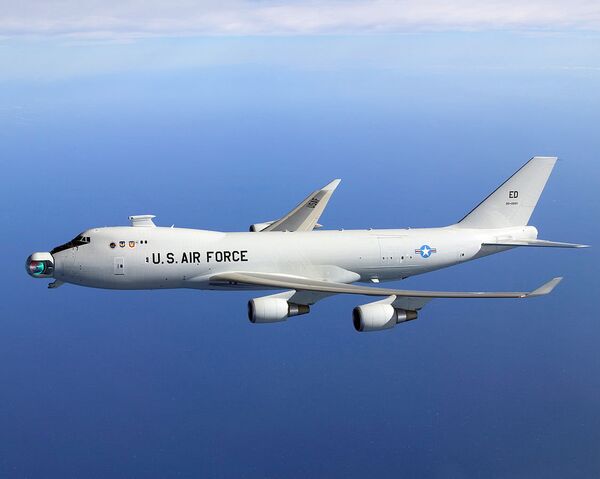
Doubts have even appeared in the US military's spending on advanced robotics. Zakvasin recalled that while "the Pentagon says that over a thousand autonomous vehicles (excluding drones) are already serving in the country's armed forces, and that some having already participated in missions in Afghanistan and the Middle East, there have been no reports on the actual combat use by ground-based robots.
For example, for about 15 years now, Boston Dynamics has been trying to create an apparatus for the transport of goods for special forces troops; the company's engineers have developed robot-mules called BigDog and AlphaDog, but for now their operation is too noisy," making them less than ideal for use in areas containing enemy forces (which is the actual point of robotic vehicles in the first place).
Ultimately, so long as the United States continues to print the de-facto world currency, and maintain the ability to enforce its preferred fiscal and economic policy with the help of its fleet of aircraft carriers, Pentagon spending, including on extravagant, costly, and even useless projects is probably likely to continue. Still, with the Defense Department already straining to compete with its self-described 'near-peer competitors', who spend only a fraction of what the US does on defense, it can onlybe imagined what would happen if the US military had to start living, and spending, within its means.
